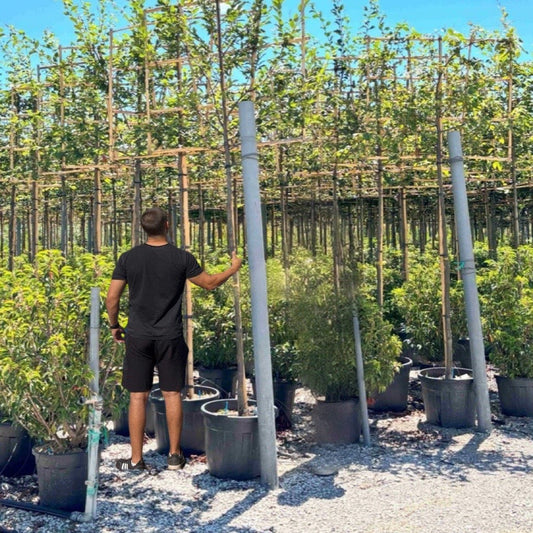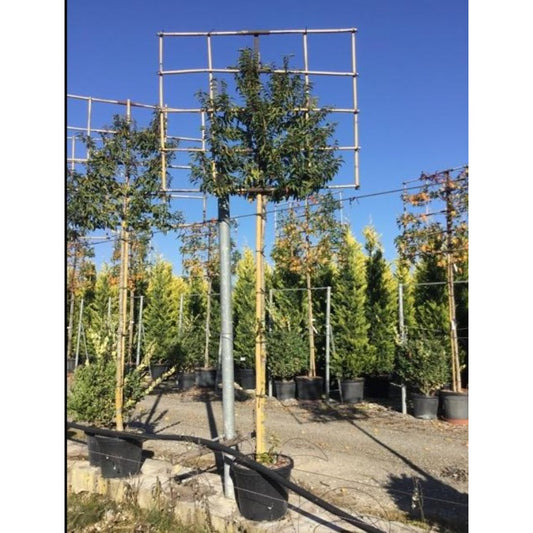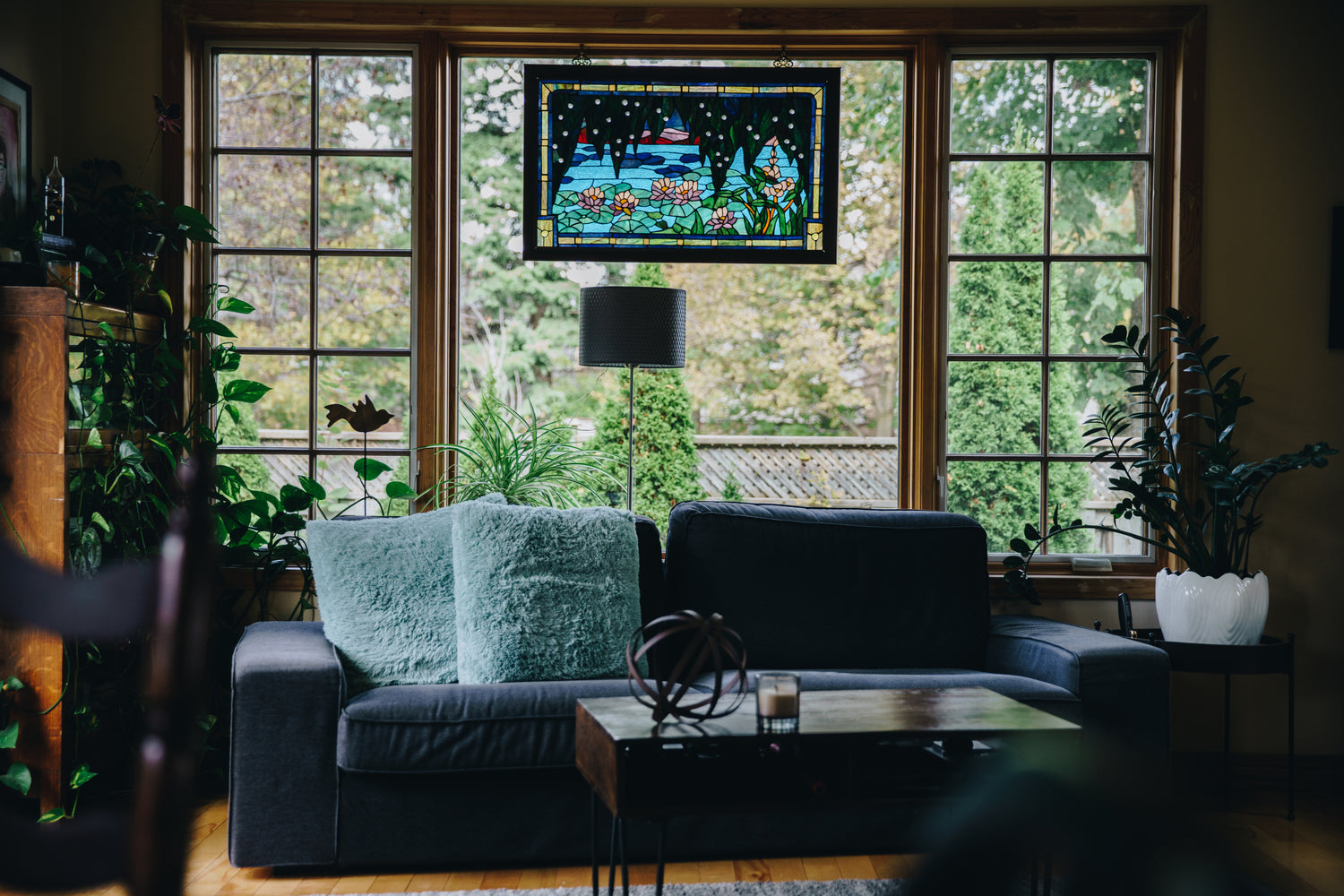Pleached trees are becoming increasingly popular in UK gardens, offering both elegance and practicality. These trees are typically grown on a clear stem with their branches trained to create a flat, framed canopy, making them ideal for garden privacy, screening, or creating green borders. But with all their beauty and functionality, a common question arises: do you need planning permission for pleached trees?
In this blog post, we’ll explore the rules and regulations around planting pleached trees in the UK and offer practical advice on how to ensure your garden improvements remain within legal limits.
What Are Pleached Trees?
Pleached trees are trees that have been trained to grow with a long, straight trunk and a flat canopy. This structured growth makes them perfect for creating privacy screens, especially in urban or suburban settings where neighbours are nearby. The tree’s clear stem allows for openness at ground level while providing privacy higher up, which is ideal for maintaining both security and visual appeal in your garden.
Common species used for pleaching include Hornbeam, Photinia, Portuguese Laurel, and Sweetgum.
Do You Need Planning Permission for Pleached Trees?
Generally speaking, you do not need planning permission to plant pleached trees in your garden. Pleached trees, like other types of trees and shrubs, fall under the category of landscaping and gardening activities, which typically do not require formal permission from the local council.
However, there are a few situations where you might need to consider the rules more carefully:
1. Trees in a Conservation Area
If your property is located within a conservation area, special rules apply to trees. Any work on trees with a trunk diameter of more than 75mm at a height of 1.5m above ground requires you to give your local planning authority six weeks' notice before you cut down, top, or lop a tree. While pleached trees are usually planted when young and may not fall under this regulation initially, it’s important to check with your local council if your garden lies within a conservation area.
2. Listed Buildings
If your property is a listed building, you may need permission to make changes to the surrounding land, especially if the tree planting alters the character of the listed property or its grounds. In this case, it’s wise to consult with your local planning authority before planting pleached trees.
3. Height and Privacy Concerns
While pleached trees offer a brilliant solution for privacy, you may need to consider the height of the tree once fully grown, particularly if it might impact neighbours. High hedges are subject to regulations under the Anti-Social Behaviour Act 2003, which gives local authorities the power to intervene if a hedge (including pleached trees) is causing problems between neighbours.
According to the law, a "high hedge" is defined as two or more evergreen or semi-evergreen trees planted closely together that form a barrier to light or access and are over 2 metres in height. If your pleached trees are part of a hedge or screen that exceeds 2 metres in height and affects a neighbour's light or enjoyment of their property, they can complain to the local council.
In such cases, it's essential to maintain good relationships with your neighbours and discuss your planting plans with them before installing pleached trees.
4. Tree Preservation Orders (TPOs)
Some trees may be protected by Tree Preservation Orders (TPOs). If the tree you wish to pleach or modify is covered by a TPO, you will need to apply for permission from your local council before any work is carried out. This usually applies to older or significant trees, so pleached trees that are newly planted are unlikely to be subject to TPOs.
Considerations Before Planting Pleached Trees
Here are a few tips to keep in mind before planting pleached trees:
- Check Property Boundaries: Make sure you’re aware of the exact boundaries of your property before planting. Trees planted too close to boundaries can lead to disputes later on.
- Consult with Neighbours: If you’re planting pleached trees for privacy, especially along boundary lines, it’s a good idea to have a conversation with your neighbours. This helps avoid potential conflicts and ensures everyone is happy with the planting.
- Monitor Growth: Regularly monitor the growth of your pleached trees to ensure they don’t exceed the height regulations or block light from neighbouring properties.
We advise readers to check with their local planning authority for confirmation regarding any specific local regulations that may apply.
Why Planting Season Matters for Pleached Trees
Planting at the right time of year gives your pleached trees the best chance to establish strong root systems and thrive for years to come. By planting in the autumn or early spring, you take advantage of the natural rhythms of the seasons, ensuring your trees get off to the best possible start. The result? Healthy, vibrant pleached trees that will provide your garden with structure, privacy, and beauty for decades.
Explore Our Selection of Pleached Trees at Twilight Gardens
At Twilight Gardens, we offer a wide selection of high-quality pleached trees that are perfect for the UK climate. Whether you’re looking for the striking red foliage of the Photinia × Fraseri 'Red Robin' or the timeless elegance of the Hornbeam Pleached Tree, we have the ideal pleached tree for your garden.
- Hornbeam Pleached Tree →
- Photinia × Fraseri 'Red Robin' Pleached Tree →
- Novita Laurel Pleached Tree →
- Portuguese Laurel Pleached Tree →
- Sweetgum Pleached Tree →
Ready to plant? Browse our range today and prepare your garden for a beautiful and functional transformation with pleached trees.










